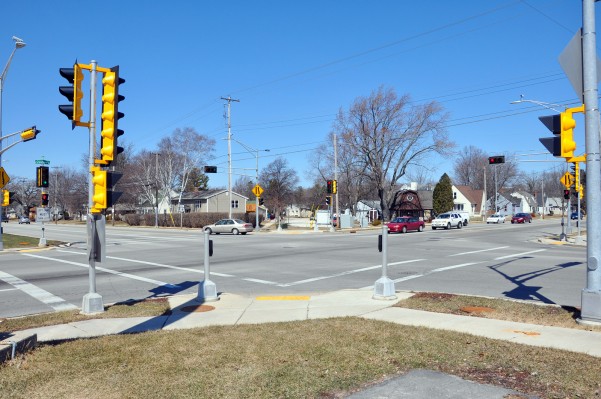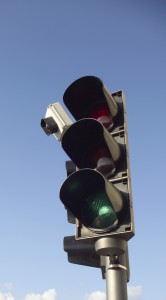Green Light, Green Light: Signal Timing Efforts Pay Big Dividends
 We’ve all been there. Somehow, generally when you’re already running late, you hit every single red light on the way to your destination.
We’ve all been there. Somehow, generally when you’re already running late, you hit every single red light on the way to your destination.
Traffic engineers spend a lot of their workday trying to make sure this happens less and less. According to the Institute of Transportation Engineers, there are about 300,000 traffic signals in America, and more than a whopping 75% of them could be improved by updating the equipment or adjusting the timing.
 The first traffic signal was installed in London in 1868 to control the snarls of carriage traffic that surrounded the British Parliament. It had semaphore arms with green and red gas lamps on a pillar and was operated by hand by a police constable. Less than a month later it exploded due to a gas leak, and that was the end of traffic control lights until 1914, when the first electric traffic signal was installed in Cleveland, Ohio; the yellow light first appeared in Detroit in 1920. Some early versions used clanging bells instead of yellow lights to warn of an upcoming change.
The first traffic signal was installed in London in 1868 to control the snarls of carriage traffic that surrounded the British Parliament. It had semaphore arms with green and red gas lamps on a pillar and was operated by hand by a police constable. Less than a month later it exploded due to a gas leak, and that was the end of traffic control lights until 1914, when the first electric traffic signal was installed in Cleveland, Ohio; the yellow light first appeared in Detroit in 1920. Some early versions used clanging bells instead of yellow lights to warn of an upcoming change.
We’ve come a long way from explosions and bells; traffic signals have been improving over the decades with innovations such as video cameras to detect vehicles or pedestrians so timing patterns can be based on actual traffic demand. Creating what is called a “green wave” – when platoons of cars hit only green lights on their way through a main roadway – reduces pollution, fuel use, and wear on vehicles; controls speeds; gives pedestrians more time to cross; and saves everyone’s time and patience. For every dollar spent on traffic signal retiming, there is as much as a $40 benefit for motorists and their communities.
Ayres Associates’ staff members have developed improved timing patterns for traffic signals in Arizona, Florida, Wisconsin, and Wyoming. For more information about our traffic engineering services, please contact Kevin Kuhlow, or Ken Voigt.

Post a comment: